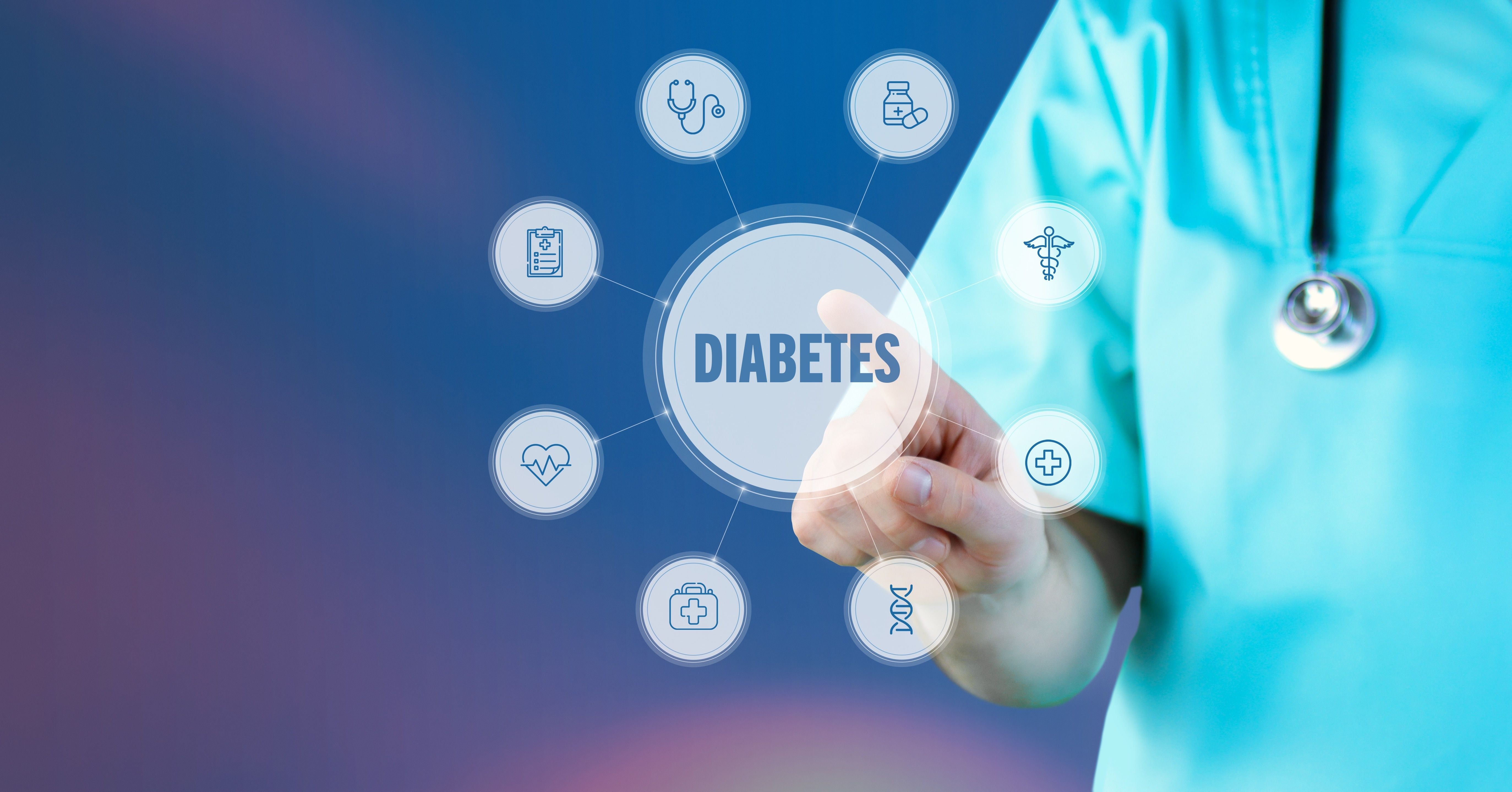- Bone Health
- Immunology
- Hematology
- Respiratory
- Dermatology
- Diabetes
- Gastroenterology
- Neurology
- Oncology
- Ophthalmology
- Rare Disease
- Rheumatology
Comparable Insulin Glargine Biosimilar Could Help Relieve Diabetes Costs
A proposed insulin glargine biosimilar (Basalin) demonstrated comparable efficacy, safety, and immunogenicity to the originator product (Lantus) in adults living with type 2 diabetes, according to results from a global phase 3 equivalence trial. The findings support the regulatory path for biosimilar long-acting insulins, which are essential products for driving price competition and generating cost savings within managed care formularies.
Type 2 diabetes. | Image Credit: MQ-Illustrations - stock.adobe.com .jpeg

The Need for Price Competition
The decision to conduct this robust comparative trial was rooted in the persistent challenge of high insulin costs in the US and globally. Insulin glargine, a cornerstone of basal insulin therapy, is one of the most widely used and expensive biologics. While follow-on insulins have entered the market, the need for fully approved biosimilars—products shown to be highly similar to the reference product with no clinically meaningful differences—remains paramount for driving price competition.
This phase 3, multicenter, open-label, equivalence trial sought to definitively establish that the proposed biosimilar could produce the same clinical results as the originator product in people with type 2 diabetes. Demonstrating equivalence across primary and secondary endpoints is the essential regulatory step required to facilitate broader adoption and support interchangeable designation, which would allow pharmacy-level substitution and streamline access for health plan members.
Trial Participants and Methodology
Investigators enrolled 567 adult participants who had a diagnosis of type 2 diabetes and were seen at 57 sites. Participants were randomized in a 1:1 ratio to receive either the reference insulin glargine product or the biosimilar product in combination with their existing oral antidiabetic medications. Insulin dosing was individually adjusted according to metabolic status and predefined glycemic targets.
The participant cohort was representative of a typical type 2 diabetes population, with a mean age of 60.8 years and a mean body weight of 98.1 kg. The majority of participants were male (60.1%) and identified as White (79.7%). Demographic characteristics, including baseline mean hemoglobin A1c (HbA1c) levels, were comparable between the two treatment groups, ensuring a reliable comparison of outcomes. A total of 515 participants (90.8%) completed the 26-week study period.
Primary Efficacy and Safety Outcomes
The investigators successfully met the study's primary efficacy endpoint, confirming equivalence between the biosimilar and the originator product based on the change in glycated hemoglobin (HbA1c) levels from baseline to week 26. The least-squares mean difference in HbA1c change fell well within the predefined equivalence margin, definitively demonstrating that the biosimilar provided comparable, effective glycemic control.
Furthermore, the safety profile of the biosimilar mirrored that of the reference product. The frequency and nature of treatment-emergent adverse events (AEs) were consistent with established safety profiles for insulin glargine. Hypoglycemia, the most commonly reported AE, affected approximately half of the participants in both groups, showing no clinically meaningful difference. Crucially, in terms of immunogenicity, the trial observed similar proportions of participants who tested positive for treatment-induced anti-insulin antibodies (AIA) in both the biosimilar (19.2%) and reference (21.3%) groups, indicating that the biosimilar did not prompt a differential immune response compared to the originator.
Caveats and Future Research Needs
Despite the robust design, the trial had several limitations inherent to phase 3 studies. First, the open-label design, where both participants and investigators knew the assigned treatment, could introduce potential bias, although primary endpoints were objectively measured. Second, the study period was limited to 26 weeks; longer-term follow-up data is necessary to fully assess the continued long-term safety and immunogenicity of the biosimilar.
Finally, the majority of the cohort was White, which may limit the generalizability of the findings across more diverse ethnic populations living with type 2 diabetes. Future research should prioritize real-world evidence and studies focused on patient-reported outcomes to complement the clinical trial data.
The authors commented on the broader impact of the findings. They wrote, "The emergence of biosimilar insulins offers a prospective path to reduce the overall economic burden of diabetes management while maintaining the highest standard of patient care."
Reference
Gisondi P, Bellinato F, Curic T, Gironlomoni G. Biosimilars for the treatment of moderate to severe chronic plaque psoriasis. Psoriasis (Auckl). 2025;15:401-410. doi:10.2147/PTT.S510156
Newsletter
Where clinical, regulatory, and economic perspectives converge—sign up for Center for Biosimilars® emails to get expert insights on emerging treatment paradigms, biosimilar policy, and real-world outcomes that shape patient care.
